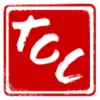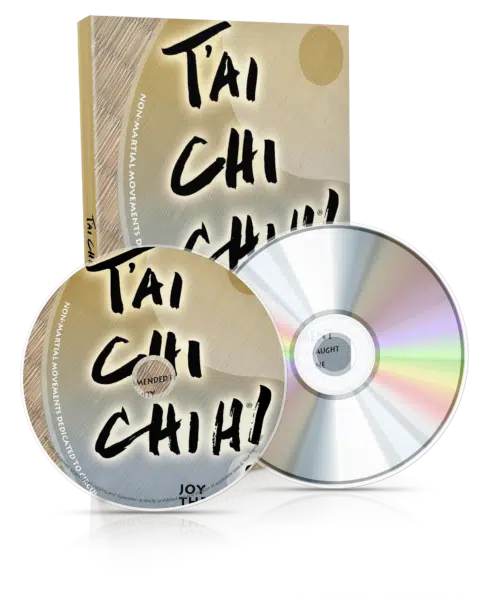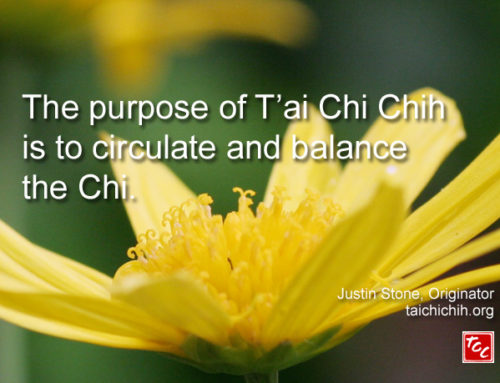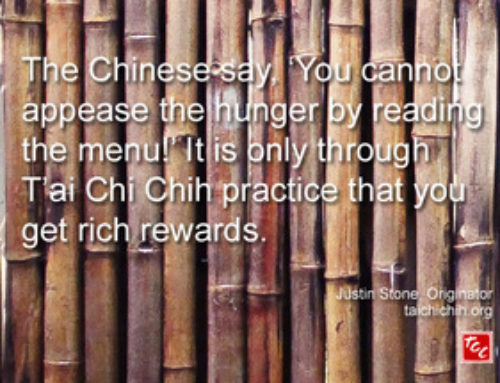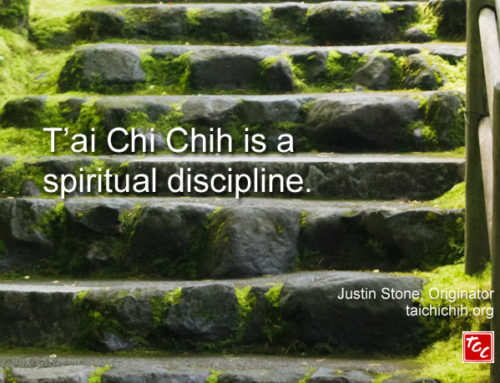Renewing Our Practice
Here, several very helpful tips are offered from the writings of TCC originator Justin F. Stone. These can refine our practice, a process we can continue as long as we do TCC. For more instruction, you can watch Justin on video here.
Teaching Tips For Teachers (Also Valuable For Students)
The Movements And Their Keys (or, what to look for) ~
“Working the Pulley” is a wonderful “exercise” for the waist. On the left side, the student starts by pushing forward the left hand as the body turns right from the waist; then, as the left hand pulls back and the right hand pushes forward, the torso (waist up) turns nearly 180 degrees to the left so it is facing the left side, not facing forward as careless students are apt to do.
The turn is completely to the opposite side, not facing forward, but in the opposing direction. Also, it should be stressed that the hand that is pulled back, palm up, comes back in a horizontal line at the waist or slightly above it. Then the hand pulls back slightly behind the body and comes up and over the shoulder (not way out to the side) in a swimming motion.
The ending will have to be taught by demonstration, so that the two hands come down together. The movement can be ended either by stepping forward or stepping back, but most teachers prefer to do it and teach it by stepping back.
~ ~ ~ ~ ~ ~ ~ ~ ~
“Light at the Top of the Head” is done softly. After the hands above the head swing out and back three times, the two hands are slowly twirled to the count of six (silent count), and then held stationary for a count of six, before swinging out again. On the descent to the “rest” position, be sure the right hand goes under the left.
~ ~ ~ ~ ~ ~ ~ ~ ~
“Joyous Breath” is the only movement done with pressure, creating tension. After pushing down into the ground on an out-breath, we pull up to the chest, rising on the toes, with a deep in-breath. Then, after a very short pause (do not keep the student standing on the balls of the feet!) we come down stopping at four levels, each time breathing out more of the breath.
By the time we are flat on the feet, with turned- down hands along the legs, all the breath should have been exhaled. I have known students who like to do this movement at the beginning of practice, before “Rocking Motion,” and there is nothing wrong with that.
~ ~ ~ ~ ~ ~ ~ ~ ~
“Passing Clouds” is to bring the hand sweeping low close to the opposing elbow. The elbows are held close to the side all through the movement; do not allow a wild, free-form waving of the hands. Naturally the sweeps are close to the face and the body, and the lower hand is almost fully extended toward the ground.
It may be easier for the teacher to work with one hand at a time, then putting them together in the opposing circular motion. Be sure the weight shifts from side to side. Do not allow the student to anchor the legs, then stand rigid and straight as the hands and arms do the work. The “yinning and yanging” of the legs is all important, with both feet flat on the ground.
~ ~ ~ ~ ~ ~ ~ ~ ~
It should be explained to the student that the sounds of “Six Healing Sounds” are from ancient China and certainly did not originate with this writer, though the movements to which the sounds are set did begin here. It is not important that the student know which sound belongs to which internal organ. Actually, there is some controversy over one or two of the sounds, almost inevitable when we consider how long these sounds have been passed down by word of mouth. They were kept for really sincere seekers.
We push out and breathe (not shout) the sounds vigorously, aspirating them rather than saying them with the vocal chords. When we turn the wrists and push to one side or the other, the hands are at waist level, not hanging all the way down. This means the wrists are cocked, and both hands are turned in the same direction.
~ ~ ~ ~ ~ ~ ~ ~ ~
The “Cosmic Consciousness” pose concludes practice, and it can be held for any length of time the teacher desires. Be sure to point out that the left heel is held against the little knob on the right leg (ankle bone) that separates the foot from the ankle. If a student has problems with balance, suggest that he or she practice the posture at home, and usually the difficulty will go away.
~ ~ ~ ~ ~ ~ ~ ~ ~
From the booklet Teaching Tips For Teachers, excerpted and available for free download on Justinstonetcc.com.
